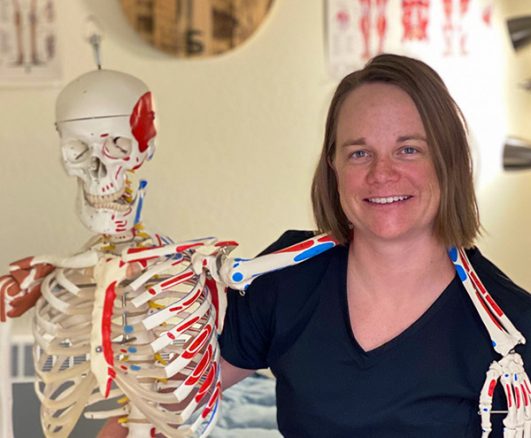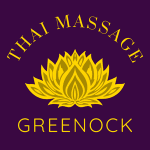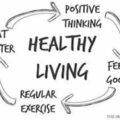Stories & important updates on Thai Massage.
Pregnancy is a feat of great physical, hormonal, and emotional adaptation. As the fetus grows and the body works to support it, the musculoskeletal (MSK) system is challenged with changing posture, spinal mobility, and muscular challenges, to name a few.
Everyday actions like bending over, rolling over in bed, getting in or out of a car, going up or down stairs, or prolonged standing can become increasingly difficult as pregnancy progresses. This can occur for a variety of reasons, including:
The body’s release of relaxin, a hormone that causes ligaments to become looser and more elastic, assisting the body (particularly the pelvis) in birth. This reduced stability can also lead to discomfort or pain.Postural changes to support an ever-shifting center of gravity: The pelvis and hips shift forward, and the lumbar spine curves more, increasing pressure—and pain—in the lower back. Stretching of nearby abdominal muscles as the fetus grows, weakening the core.Increased fluid circulating in the body, straining the joints and possibly leading to joint instability.
All combined, a weaker core, new proprioception of an always-changing mother’s body, and a fetus that moves around can lead to general imbalance.
Everyday Tips for Reducing MSK Pregnancy Pain
Simple lifestyle changes can have a big impact in helping joints and muscles function healthily during pregnancy. Some tips are:
Make an effort to move throughout the day, and perform tasks for shorter periods with regular movement breaks. Avoid repetitive actions of the hands, wrists and arms to reduce strain on the joints that can lead to carpal tunnel syndrome.When resting, lay or sit with feet up to promote circulation.Avoid any activity that feels too strenuous, such as lifting or deep bending. Mind your sitting posture, particularly if you spend a significant portion of the day seated. Hips, knees, ankles, and elbows should all be at approximately 90 degrees. Avoid crossing knees or ankles, so weight is distributed evenly across the left and right hemispheres.Be mindful of sleeping posture, too, which is vital to rest. Typically, one will sleep on their side throughout pregnancy, and the relaxin can pull on joints uncomfortably during sleep. Arrange some pillows to solve for this:A pillow under the head keeps the neck in a neutral positionA pillow to hug keeps the chest from collapsingA pillow under your bump prevents pulling on uterine ligamentsPillows between the thighs, knees, calves, ankles, and feet will keep the whole of the legs supported and prevent ligaments from bearing too much of the burden of gravity
Safe and Healthy Fitness Before and During Pregnancy
Exercise is essential for every person’s muscles and joints, and that’s no different if you’re expecting! Those who exercise regularly before pregnancy are likely to experience less MSK dysfunction and pain while pregnant. Here are some key practices to optimize MSK health before pregnancy:
Overall strength training: Strength training will help build muscle strength, provide stability to your joints, improve bone health and help the body support weight gain from pregnancy (not to mention the physical demands of motherhood).Aerobic exercise: Activities like walking, cycling, and swimming increase heart rate, improve heart and lung health, and promote blood supply to the muscles. Cardiovascular demand can increase up to 50% during pregnancy, so a strong and healthy heart is essential for an expecting mother. Interval training: Exercise consisting of alternating periods of high and low-intensity is an effective way to increase cardiovascular efficiency (the ability to deliver oxygen to muscles, organs, and blood). Pelvic floor muscle strengthening: These muscles support the uterus, bladder, and bowel, and strengthening them may help avoid incontinence that can be a result of pregnancy. Start with this essential kegel exercise: Think of your urethra as a straw; imagine sucking in with the straw and hold for 8 seconds, then relax for 8 seconds. Repeat 10 times, once per day.
Exercising throughout the duration of pregnancy is recommended and can greatly benefit MSK health. U.S Department of Health and Human Services Physical Activity Guidelines for Americans says that healthy pregnant women with no preexisting conditions should aim for at least 150 minutes of moderate-intensity activity per week with a mix of aerobic and resistance training.
Types of Exercise to Do (and to Avoid) While Pregnant
Myth busted: You can continue vigorous activity during pregnancy! Of course it’s important to consult with your doctor, listen to your body, and know where your limits are. But, generally speaking, the more athletic you are before pregnancy, the more intensity you’ll be able to tolerate during it. And being active can make pregnancy a much easier process.
Recommended Exercises During Pregnancy
These exercises will maintain cardiovascular health and muscle tone while limiting the stress on the joints:
Your regular pre-pregnancy exercise routine—your body knows how to do this well!SwimmingTai ChiBrisk walkingChair exercisesLow impact aerobicsStrength trainingIndoor stationary cycling
Exercises to Avoid During Pregnancy
Any exercise that requires laying flat on your back should be avoided after 20 weeks—this causes the fetus and womb to put pressure on the main blood vessels that supply the uterus, which can restrict blood and oxygen flow.Activities that pose a high risk of falling, like mountain bikingActivities that can cause you to hit water with great force, like surfingContact sports or other activities that may result in direct trauma to the abdomen, like soccer or kickboxingScuba diving, which can cause fetal complications and put your baby at risk of decompression sickness Any exercise at a higher altitude than that to which you’re accustomedHeat-centric exercise, such as Bikram yoga or hot pilates, which can raise body temperature excessively and increase the risk of brain and spinal cord defects in the fetus. As a general rule of thumb, pregnant women should avoid raising their body temperature above 101° F (which makes saunas and hot tubs verboten, too).
Other Ways to Support Your Musculoskeletal Health During Pregnancy
Prenatal Massage
Massage can help support the MSK system during all stages of pregnancy, providing much-needed relief during the dramatic physical changes a pregnant body undergoes. Typically after about 11 weeks, prenatal massage takes place in a side-lying position. Face-down massage on a table with a belly cutout is strongly discouraged, as this position can put significant strain on uterine ligaments.
During a prenatal massage, it’s essential to listen to your body and communicate with your therapist about your comfort. If your body is telling you that you need to change positions, don’t ignore that little voice. Let your therapist know what position will make you more comfortable. Whether an obvious sensation of discomfort or an intuition, listen to it and communicate your needs with the therapist.
If you’re receiving a massage at home, be sure to have numerous pillows available. The therapist will position them to ensure full support of your head, your chest and back, legs and hips, and of course your bump, with a goal of keeping them in a neutral position during the massage.
You may also need to adjust the length of the massage to suit your comfort level. A shorter massage may be appropriate if you’re just not comfortable on the massage table for that long…or, you may want a longer massage because the support of the expertly placed pillows has finally given you relief! Again, listening to your body, trusting it, and communicating with your therapist is key to ensuring you get the most therapeutic benefits of massage.
Yoga
Prenatal yoga classes are specially designed to help an expecting mother have a more comfortable experience of both pregnancy and birth by cultivating hip strength, flexibility, and mobility. These classes will focus on poses such as Malasana, which strengthens one’s squatting ability, improves hip flexibility and mobility, and activates the glutes and other nearby muscles—all excellent for birthing preparation.
A certified prenatal yoga instructor will make the necessary modifications to the program and recommend avoiding poses that can be of harm through the progression of your pregnancy.
Deep Breathing Exercises
The lungs are increasingly compressed during the progression of pregnancy, so deep and healthy breathing is essential. Deep breathing exercises can reduce stress, lower heart rate, and keep the nervous system calm during labor. Additionally, breathing exercises will keep the blood properly oxygenated and stabilize blood pressure, promoting strength and endurance.
There are copious options to choose from, but here’s one you can try right now:
Take a deep breath in through your nose, counting to 8.Slowly exhale through your nose, for a count of 8. During your exhale, keep your mouth closed, but imagine you are trying to fog up a window with your breath—this “throat breathing” opens the airways and assists in thoroughly emptying your lungs to let in fresh oxygen.Open your mouth wide and take 5 quick shallow breaths.Repeat the cycle of deep and long breaths and quick shallow breaths 5 times.
Get Professional Guidance
Hire a certified personal trainer who has a pre and post-natal fitness certification. They will be there to guide you and ensure you are performing exercises with proper form and alignment which can help prevent injuries. And, of course, always talk to your doctor about any exercise routine or other physical activities you’ll be taking up during pregnancy, to make sure you’re always doing the best and safest thing for your musculoskeletal needs.

Reviewed by Melanie Peddle, LMT. Melanie has practiced massage therapy since 2012 and has an engineering background. She teaches at Western Colorado University in the areas of biomechanical engineering and adaptive sports applications. Meet our Editorial Review Board.
The post Pregnant (or Planning a Pregnancy)? Here’s How to Optimize Your Ergonomic Health for What Comes Next appeared first on Zeel.
This article Pregnant (or Planning a Pregnancy)? Here’s How to Optimize Your Ergonomic Health for What Comes Next was provided here.
I hope you found the above of help or interesting. Similar content can be found on our blog thaimassagegreenock.co.uk.
Please let me have your feedback in the comments section below.
Let us know what topics we should cover for you in future.
Thai Massage Newsletter
To make sure you don’t miss out on any new posts or promotions that we introduce, sign up for our newsletter.
Once a month we run a special promotion for our newsletter members, so sign up now to make sure you don’t miss out.
It’s free and full of great health and nutrition tips and advice on how we can help you achieve your health and fitness goals.





